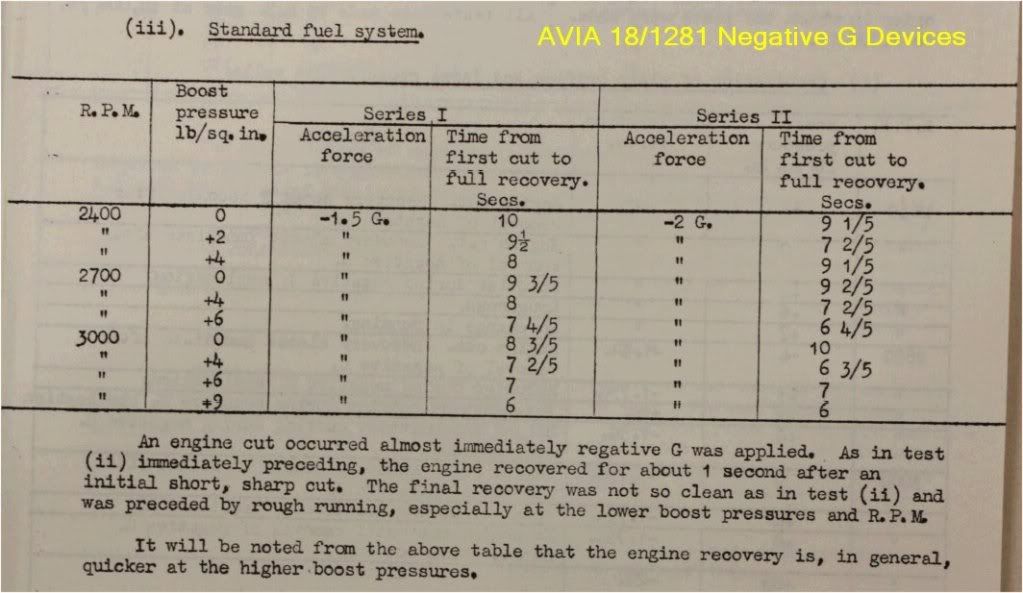A second related document is in the UK National Archives "AVIA 18/1281 Tests of RAE devices for the reduction of "Negative G" engine cutting on merlin engined fighter aircraft". This document details flight test data on 3 devices (Including the Schilling orifice ... though its called the RAE Restrictor .... PC in action back in the 40's).
It compares each of the devices to an unmodified aircraft. In the tables presented the G used to induce cutout are in the order of -0.5G up to -1.5G. Though emphasis of the document is on the time taken to recover from cutout rather than preventing it, despite the document title.
Given the document is not looking at specifically preventing cutout itself but rather minimising the time of the cutout it needs to be put into perspective when using it to decide on initial cutout values. However it is of interest (imo) that reasonable values of Negative G were used (i.e. significantly less than 0G) in all the tests.... i.e. not just smooth nose position changes.
In our discussion here we are only interested in unmodified systems. The jpg below is from the document referring to an unmodified or "Normal Fuel System" aeroplane
